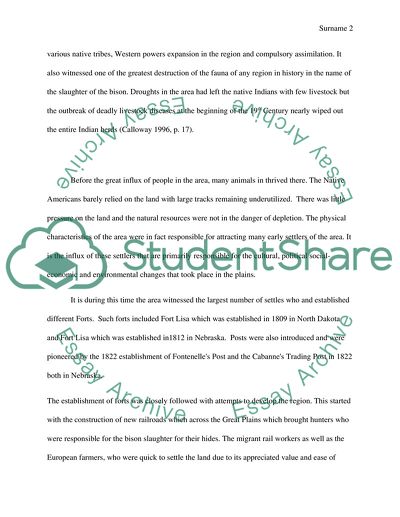Cite this document
(“The Great Plains region in the early nineteenth century has been Assignment - 1”, n.d.)
The Great Plains region in the early nineteenth century has been Assignment - 1. Retrieved from https://studentshare.org/history/1606582-the-great-plains-region-in-the-early-nineteenth-century-has-been-described-as-a-world-in-flux-to-what-extent-do-the-sources-justify-this-description
The Great Plains region in the early nineteenth century has been Assignment - 1. Retrieved from https://studentshare.org/history/1606582-the-great-plains-region-in-the-early-nineteenth-century-has-been-described-as-a-world-in-flux-to-what-extent-do-the-sources-justify-this-description
(The Great Plains Region in the Early Nineteenth Century Has Been Assignment - 1)
The Great Plains Region in the Early Nineteenth Century Has Been Assignment - 1. https://studentshare.org/history/1606582-the-great-plains-region-in-the-early-nineteenth-century-has-been-described-as-a-world-in-flux-to-what-extent-do-the-sources-justify-this-description.
The Great Plains Region in the Early Nineteenth Century Has Been Assignment - 1. https://studentshare.org/history/1606582-the-great-plains-region-in-the-early-nineteenth-century-has-been-described-as-a-world-in-flux-to-what-extent-do-the-sources-justify-this-description.
“The Great Plains Region in the Early Nineteenth Century Has Been Assignment - 1”, n.d. https://studentshare.org/history/1606582-the-great-plains-region-in-the-early-nineteenth-century-has-been-described-as-a-world-in-flux-to-what-extent-do-the-sources-justify-this-description.


